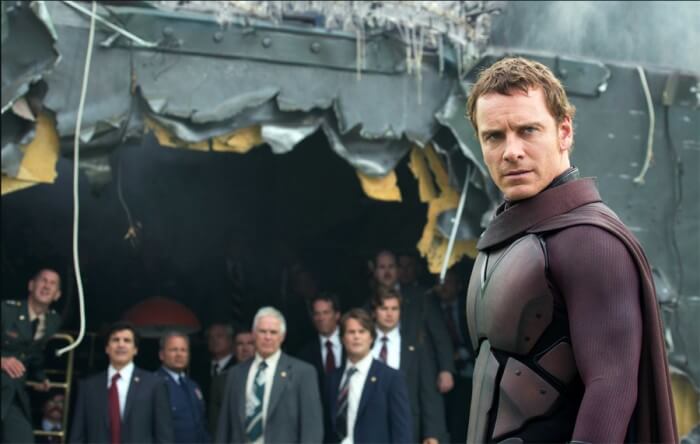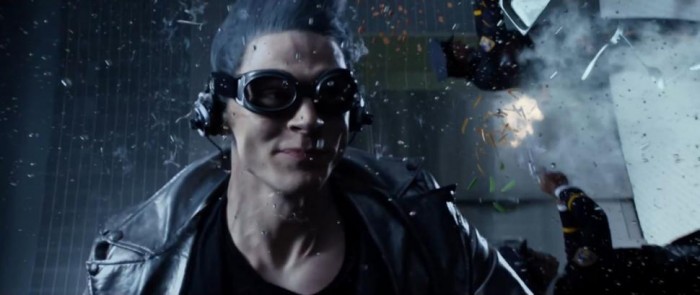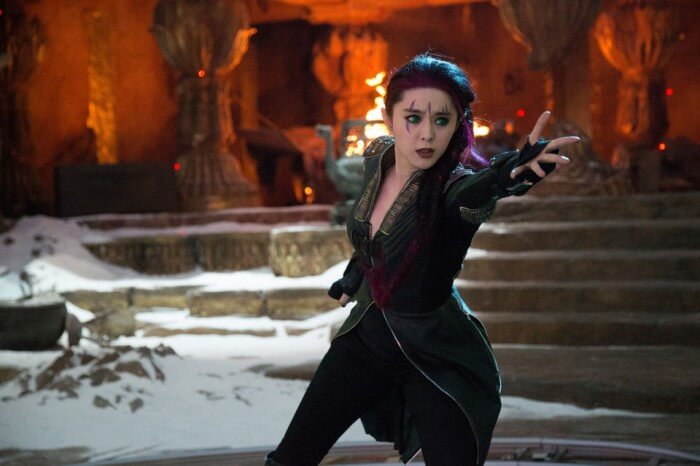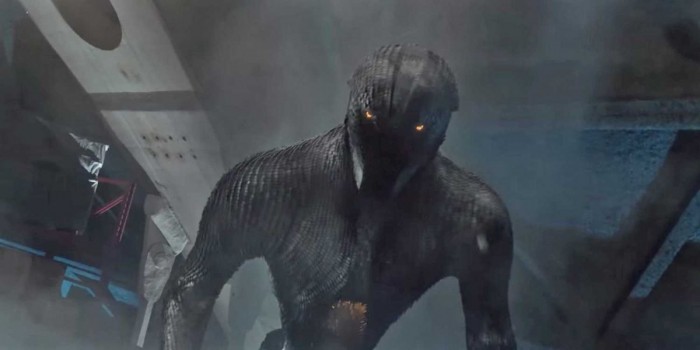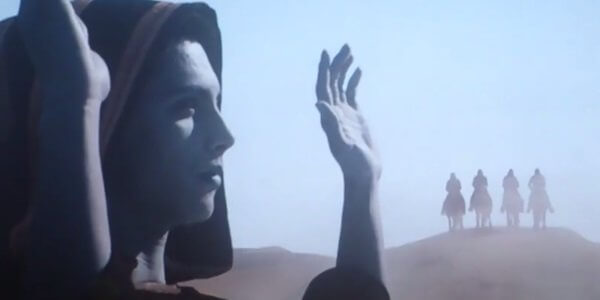X-Men: Days of Future Past is an enjoyable dream sequence reboot
Brian Singer’s back in the director’s chair for the latest X-Men installment, and his X-Men: Days of Future Past is an effective push of the reset button that fans of the franchise have been begging for. The film rewinds time, in more than one way, and when all is said and done we’re somewhere between Singer’s own X2 and whatever future Marvel has planned for their newly stocked toy box of mutants. The movie is a mixed bag of throwaway characters, muted favorites from past films, a few completely unexplained plot holes, a handful of exceptional action sequences, and an overall focus on empathy, hope, and correcting mistakes of the past to create a brighter future. It’s a little cliche, a lot of fun, and opens up a whole new world of renewed possibilities.
Read a full review for X-Men: Days of Future Past after the jump. *SPOILERS* will be clearly marked.
Let’s get the obligatory plot paragraph out of the way – The film first focuses on a nondescript future in which mutants are being hunted and killed with outstanding efficiency by evolving robots called The Sentinels. In an attempt to rewrite this dark future, an older Professor X (Patrick Stewart), Magneto (Ian McKellen), and a handful of remaining X-Men put all their eggs into the “let’s try to send Wolverine’s consciousness back to his body in the ’70s to warn our younger selves and stop this from happening” basket, and this is where the story splits into its two intertwining threads of past and present (future). Wolverine gets sent back while still in a trance-like state in the future, the past mutants must overcome their demons and unite to stop an assassination that sets the Sentinel program in motion, and the Sentinels of the future are getting closer to finding and destroying the future X-Men before the past X-Men complete their mission. Got it? It may sound a little convoluted, but once you wrap your head around the used-before time travel aspect and how it’s being adapted you’ll settle into the film’s back and forth. That said, it’s definitely a little bit to take in all up front.
The opening sequences establish the movie that’s about to unfold in a way that asks viewers to jump on board an already in-flight jumble of odd assumptions. Among them are *SLIGHT SPOILERS* 1. A somehow alive and well Professor X of the future (didn’t his body get destroyed in X-Men: The Last Stand?), 2. A Kitty Pryde (Ellen Page) with un-explained time travel/mind-altering abilities (seriously, not even a word regarding her new-found power, and it’s not enough to know she had them in the comics), 3. A young Magneto (Michael Fassbender) who’s being held deep under the Pentagon in a plastic prison (how he got there we’ll never know), and 4. A time travel plot with the intended purpose of re-writing the franchise starting once more in the ’70s. The movie is a bold, seemingly-calculated move to give us an in-between film that’ll cleanse our palettes before everything filling the Marvel pipeline is piled onto our plates. It could just as likely be the X-Men movie we look back on as the one that jumped the shark and moved from casual movie-goer territory into comic book-fueled excess, copy-and-paste action beats, and fanboy fodder the likes of which we’ve never seen.
Take, for instance, the much-talked-about Quicksilver scenes (that’s him up above). At first feared by fans because of his flashy costume, this fast-footed troublemaker easily steals the show while he’s on screen. The problem is, his appearance is little more than a glorified cameo pulled from an action drawer and then tucked away once it’s served its purpose. He’s a new mutant stepping stone randomly pulled from the curtains to help free Magneto in the past, which, consequently, is probably the least important thing he could have been used for. Unfortunately, as enjoyable as his appearance is, when you look just under the surface Quicksilver isn’t much more than a Nightcrawler substitute with less backstory. Such is the case with all new mutants introduced in this film – they’re purely substitutes and stepping stones to keep the story steadily churning forward, backward, and then forward again toward an inevitable conclusion. It all feels like a lucid dream in which faces of old friends and random strangers flash by, get torn apart, melt away, give an elegant speech, and share a few minutes of muddled spotlight. You know it’s all without consequence and just for fun because you’re going to wake up sooner or later, so you go along for the ride and enjoy it while it lasts.
And, as negative as this review has sounded up to this point, there are plenty of enjoyable moments to soak in. From the performances of returning heavy-hitters like Fassbender, Stewart, McKellen, Jennifer Lawrence (Mystique), Nicholas Hoult (Beast), Hugh Jackman (Wolverine) and James McAvoy (young Charles Xavier) to excellent turns from Evan Peters (Quicksilver) and Peter Dinklage as Sentinel inventor Bolivar Trask, everyone is comfortable embodying their characters and eating up the scenery. As for the newcomers like Bingbing Fan (Blink), Omar Sy (Bishop), Booboo Stewart (Warpath), and Adan Canto (Sunspot), these fleeting new faces serve up action scenes that are far more immersive and impressive than almost anything we’ve gotten in previous films. That’s why it’s so unfortunate that we don’t get to know any of them beyond their on-display powers and maybe one utterance of their character names. They’re served up appetizer-style in the sense that we get just enough to tease but not enough to root for anyone or feel satisfied once they’ve been washed down with the happenings around them and digested by the time travel backdrop.
On the flip side of the action coin, the film is arguably at its core about personal choice and hope. It’s a theme that’s been re-tread countless times in countless forms, but it’s one that’s surprisingly cerebral and heartfelt for an X-Men entry. Can a broken and burned out young Charles Xavier conquer his internal demons to become the teacher and leader he must? That’s the question at the center of it all, and it’s a question worth asking at least once in film form. Hell, Wolverine got five films to get over his issues, and he’s still got some stuff to work through.
As far as the “better than The Avengers” buzz going around, it’s really a personal preference. Both movies bring together iconic comic book characters on the big screen in an inventively successful way while establishing all kinds of future potential. If everything changed after New York for The Avengers universe, everything has absolutely changed after Days of Future past for any and all adventures involving the X-Men. Many have said this movie was a not-so-subtle middle finger purposely thrust into theaters to erase the damage done by Brett Ratner’s X-Men: The Last Stand, and there’s no question the events of that film are completely inconsequential now as the Marvel-verse blazes forward. Personally, I had a good time watching Days of Future Past, and I’m really looking forward to seeing what’s in store for both characters new, old, and reborn. That said, I didn’t have a clue what the end credits stinger was about (read more further down), but from what I understand it’s definitely an indicator that we may have just jumped that shark.
Here are just a few nitpicks that have been eating away at me since seeing the film *SPOILERS*:
- Michael Fassbender’s Magneto was extremely flat in his “Mutants=good, humans=bad” engrained mentality, and Fassbender never really got to shine here. Also, as mentioned, how did he end up in prison after the events of First Class?
- Why introduce Quicksilver and his completely game-changing abilities if you’re going to send him home after his spotlight sequence? It’s a little like standalone Avengers movies not acknowledging that the rest of the Avengers are out there somewhere but not being utilized in their time of need.
- The Sentinels of the future were essentially Sentinels from The Matrix, the X-Men’s hidden base was the Nebekenezer, Kitty Pryde was Wolverine’s link to The Matrix, and the past was The Matrix itself. The similarities are uncanny.
- So, Beast can control his powers like The Hulk? Is that what small doses of his serum do?
- I absolutely loved seeing mutants dying left and right, but it all felt like cop-out dream sequence stuff and meaningless. I don’t see this kind of death toll being repeated without the time travel reset button being an option (and in the comics characters die and come back all the time). Marvel is too invested in its franchise-mobile now, and almost any character can be primed for a potential spin-off. They can’t gamble away killing someone if it means that character won’t get a movie in the future, right?
- Seriously, how is old Professor X alive again?
Which brings us to the after-credits stinger scene. From what I’ve read, what we see here is a very young Apocalypse (the very first mutant) creating the Egyptian pyramids. Those four guys on horseback in the background are his four horsemen (get it?). Apparently, Apocalypse is pretty much indestructible, and he’ll be the villain in the upcoming X-Men: Apocalypse. I’ve never heard of this guy, don’t have a clue what he’s capable of, and can’t be sure whether I should be excited or not. Again, is this when we see Marvel dig a little too deep into the comic book canon and alienate casual audiences? Let’s hope not, because Days of Future Past was a great step in an interesting direction, and the future is extremely bright for everything X-Men.

